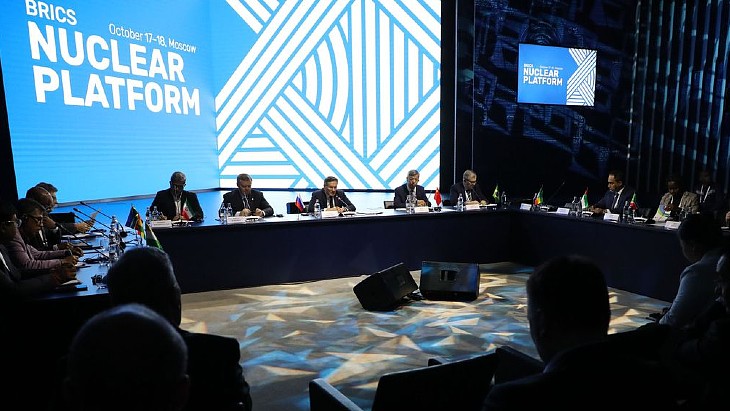 www.world-nuclear-news.org
www.world-nuclear-news.org
The creation of the Nuclear Energy Platform is intended to share experience and support the development of nuclear technologies among BRICS+ member countries. The intergovernmental BRICS organisation's members are currently Brazil, Russia, India, China, South Africa, Iran, Egypt, Ethiopia and the UAE, with more than 20 other countries also expressing an interest in joining the organisation which is widely seen as a counterbalance to the G7 grouping of industrialised nations. The presidency of what is now sometimes referred to as BRICS+ since its expansion from 5 to 10 members this year, is currently held by Russia, with its annual summit taking place in the city of Kazan next week. But ahead of that event, the BRICS+ Business Forum has been taking place, with the issue of collaboration in the field of peaceful uses of nuclear technology discussed at a meeting at Moscow Atom Museum. Alexey Likhachev, Rosatom director general, said that nearly all the organisation's members were implementing projects in the field of nuclear energy: "Today, many BRICS members are the technological drivers of the international nuclear market. The common experience can and should be used and replicated throughout the BRICS space and on the planet as a whole. Therefore, we propose to join forces within the framework of the BRICS nuclear platform, a voluntary alliance of companies, professional nuclear communities and NGOs supporting the development and implementation of nuclear technologies." BRICS member countries currently have 390 GWe of operable nuclear power units with a further 66 MWe under construction. One of the platform's aims is to help companies, if required, with persuading their governments to see nuclear as a clean energy source, and also share assistance for dealing with other issues which may be hampering nuclear energy projects. According to Russia's official Tass news agency, Likhachev told reporters that the process of legal formalisation of the Nuclear Energy Platform had started and that its main aim was to develop and implement best practices relating to energy and non-energy use of nuclear technologies for peaceful purposes in BRICS and BRICS+ markets and to develop incentivising mechanisms and models of projects’ implementation in member countries. It reported him as saying that the platform was intended for companies, nuclear power plants and related organisations - "those capable of contributing to development of the nuclear power sector" - and the plan had been backed unanimously. Orpet Peixoto, deputy chairman of the Brazilian Association for the Development of the Nuclear Industry, said: "I am very happy with the progress in the formation of the Platform. I believe that it will prove fruitful for BRICS countries and BRICS associate member-states ... we are one of the very few countries in the world with all the elements of nuclear fuel cycle but we need support, we need financing, and we know that we can get them through cooperation with the BRICS countries. So, I see Brazil has a lot to gain from the cooperation within the platform." Meanwhile, speaking at the BRICS business forum on Friday, Russian President Vladimir Putin said that BRICS members now had a bigger share of global gross domestic product than the G7 members, saying its members were "in fact the drivers of global economic growth" and with the development of "communication channels, technological and educational standards, financial systems, payment instruments and, of course, mechanisms for sustainable, long-term investment ... the economic growth of BRICS members in the future will increasingly depend less on outside influence or interference".
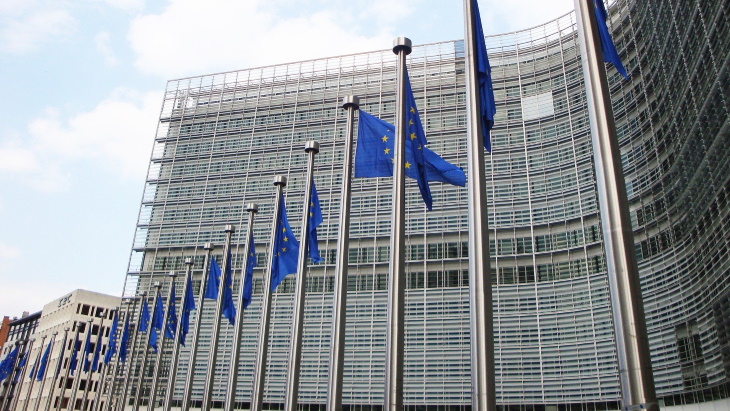 www.world-nuclear-news.org
www.world-nuclear-news.org
Member countries of the European Nuclear Alliance have called upon the next European Commission to recognise the contributions of both nuclear and renewables in Europe's decarbonisation in its upcoming programme, covering the period 2024-2029. The Alliance met on 15 October in Luxembourg in the margins of the Energy Council with ministers and high-level representatives from 14 EU member states (including the upcoming Polish presidency) as well as the European Commission. In a joint statement, the Alliance said: "In a changing global geopolitical context, the upcoming 2024-29 Commission's mandate must ensure the competitiveness and resilience of our economies towards reaching climate-neutrality by 2050 and to address the 'existential challenge' that Europe is facing. "Nuclear energy, alongside renewable energy, is a cost-competitive solution to meet the growing demand for fossil-free electricity and mitigate climate change, thanks to its low-carbon footprint. Nuclear energy is the ready-available fossil-free technology able to produce consistent baseload dispatchable power, ensuring both our collective security of supply and the necessary flexibility in our electricity market." In March, the European Nuclear Alliance outlined four pillars of action to set "an enabling European framework to foster a robust European nuclear industry and guarantee the security of supply of nuclear materials, particularly nuclear fuel, for power and non-power uses". These included: developing access to private and public financing, and exploring the possibilities and benefits of European financing instruments; developing a skilled and diverse nuclear workforce for all civil nuclear applications; scaling-up industrial, research and innovation collaboration across a European value chain through concrete projects; and respecting the national choices of all member states with regards to the decarbonisation of their energy mix to strengthen our unity. "We commit to intensify our cooperation within the Alliance, with all other like-minded EU member states and with the European Commission on these four pillars," the Alliance said in their latest statement. "The benefits of existing and future nuclear power plants go beyond the borders of member states which opt for nuclear energy," they continue. "Indeed, low-carbon baseload energies such as hydro or nuclear power stabilise our common grid and the entire European electricity market. "Nuclear energy as well as renewables are true collective assets for the European Union. Due to its baseload profile and low operating costs, nuclear power production creates less volatile market conditions. Without such energies, there is no path for the EU to provide to its citizens affordable, reliable and abundant low-carbon energy while achieving net-zero by 2025." The 103 nuclear power reactors currently in operation in the EU provide it with about one-quarter of its electricity. The current Commission's term of office runs until 31 October 2024. Between 6 and 9 June, EU citizens voted to elect the 720 members of the next European Parliament. European Commission President Ursula von der Leyen was elected for a second mandate. The European Nuclear Alliance comprises Bulgaria, Croatia, the Czech Republic, Finland, France, Hungary, the Netherlands, Poland, Romania, Slovakia, Slovenia and Sweden, plus Belgium and Italy as observers.
 www.world-nuclear-news.org
www.world-nuclear-news.org
The head of cloud-based gaming services provider Ubitus KK has said the Tokyo-based company is planning to construct a new data centre in Japan and is specifically looking at areas with nearby nuclear power plants. Ubitus already has two data centres for gaming - located in Tokyo and Osaka to be close to gaming clients - which are operated in partnership with Nippon Telegraph & Telephone Corporation. The company is now looking to build a third data centre to serve generative artificial intelligence. For generative AI, the priority becomes more about the size of energy supply and electricity price, Ubitus CEO Wesley Kuo told Bloomberg. Kuo said the company is looking to acquire land in Kyoto, Shimane or a prefecture in Japan's southern island of Kyushu, primarily because of the availability of nuclear power in the region. Setting up a data centre in these areas would allow access to a grid with cheap and stable electricity thanks to the nuclear facilities, he said. Kyoto is close to several nuclear power plants operated by Kansai Electric Power Company, while Kyushu is home to four units managed by Kyushu Electric Power Company. Chugoku Electric Power Company is scheduled to restart unit 2 of its Shimane plant in Shimane Prefecture in December. "Unless we have other, better, efficient and cheap energy, nuclear is still the most competitive option in terms of cost and the scale of supply," Kuo said. "For industrial use - especially AI - they need a constant, high-capacity supply." Ubitus expects to select a location for its new data centre in early 2025, Kuo told Bloomberg. The centre will initially have power-receiving capacity of 2-3 MWe, with plans to potentially expand to up to 50 MWe. In March, Ubitus announced that it had received new investment from California-based software and fabless company Nvidia Corporation, which it said "underscores the immense potential and accelerating demand for generative AI and cloud gaming across Asia and beyond". Earlier this week, online shopping and web services giant Amazon announced it was investing USD500 million in developing nuclear technologies to power its data centres. That announcement came two days after fellow online giant Google signed a Master Plant Development Agreement with Kairos Power for the development and construction of a series of advanced reactor plants. And last month Microsoft announced it had signed a 20-year power purchase agreement with Constellation which would see Three Mile Island unit 1 restarted, five years after it was shut down.
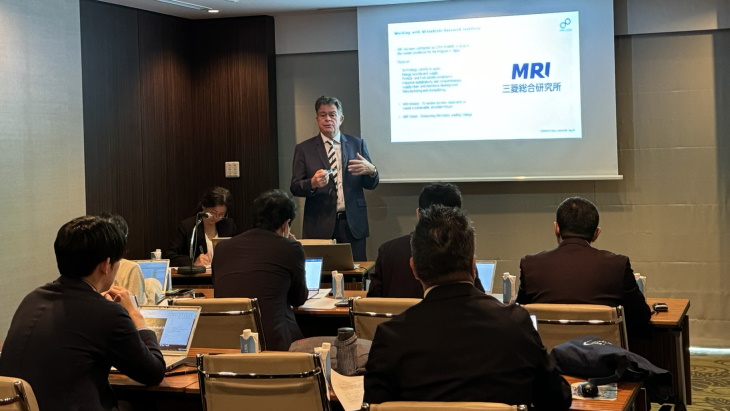 www.world-nuclear-news.org
www.world-nuclear-news.org
Core Power announced it has signed an agreement with Mitsubishi Research Institute to study market conditions for a maritime civil nuclear programme in Japan. The UK-based company is also nearing completion of its Series B funding round of USD500 million. Core Power said it signed the agreement with Mitsubishi Research Institute to "further strengthen its operations". "Japan will play a major role in the development of the specially designed ships as it is a world leader in innovative engineering and shipbuilding," said Core Power CEO Mikal Bøe. "Core Power is also working to build continued support from Japanese, European and American end users in shipping, finance, industry and trading houses." In May last year, it was reported that more than a dozen Japanese companies - including Onomichi Dockyard and Imabari Shipyard - had invested a combined total of about USD80 million in Core Power, which is helping develop a floating molten salt reactor nuclear power plant and other maritime applications. The British company is now reportedly majority-owned by Japanese companies. Core Power said its technology will "power large ocean-going ships with dramatic improvements in energy efficiency and true zero emissions, an estimated USD3 trillion market for large ships by 2060". It also plans to provide reliable, clean floating nuclear energy to coastal customers, on time and on budget. Estimates are that the floating nuclear power market will reach USD2.6 trillion by 2060. Once the first ships and floating power plants are built, Core Power will co-own and operate 'turnkey' floating nuclear power solutions with customer investors. The company said it aims to build an order book of critical mass by 2030 worth up to USD10 billion. "We are entering an exciting period in the development of maritime nuclear technology, as we move from the drawing board to building technology which will change the face of shipping for good," Bøe said. The shipping industry consumes some 350 million tonnes of fossil fuel annually and accounts for about 3% of total worldwide carbon emissions. In July last year, the shipping industry, via the International Maritime Organization, approved new targets for greenhouse gas emission reductions, aiming to reach net-zero emissions by or around 2050.
 www.nucnet.org
www.nucnet.org
The US has announced initial contracts to four companies hoping to produce high-assay low-enriched uranium, or Haleu, for an expected new generation of high-tech nuclear power reactors, the US Department of Energy (DOE) said on Thursday (17 October). Russia is currently the only country that makes Haleu in commercial volumes. Funds to make the fuel domestically in the US were included in a May 2024 law to ban uranium shipments from Russia by 2028. The four companies awarded contracts are US-based Centrus Energy subsidiary American Centrifuge Operating; Urenco USA, which is a British, Dutch, German company with operations in New Mexico; Orano USA, based in Maryland with global headquarters in France; and a company called General Matter. “All contracts will last for up to 10 years and each awardee receives a minimum contract of $2 million [€1.8m], with up to $2.7 billion available for these services, subject to the availability of appropriations,” the DOE said. Energy secretary Jennifer Granholm said the announcement represents the Biden-Harris administration’s latest efforts to build a secure domestic Haleu supply chain, which is essential to bringing advanced nuclear reactors online and meeting the growing demand for clean, reliable electricity. Haleu is uranium enriched between 5 and 20%, which increases the amount of fissile material to make the fuel more efficient relative to lower-enriched forms of uranium. Many advanced reactors – likely to be deployed from the 2030s onwards – will use Haleu to achieve smaller designs, longer operating cycles, and increased efficiencies over current technologies. Under the DOE contracts, the four companies will bid on future work to produce and store Haleu in the form of uranium hexafluoride gas to eventually be made into fuel for advanced reactors. Centrus president and chief executive officer Amir Vexler said the award could facilitate the potential expansion of Centrus’ first-of-a-kind Haleu production capacity in Piketon, Ohio, to help meet the needs of the advanced nuclear industry and the nation. “It represents a critical piece of the public-private partnership we are working to build so that we can restore a robust, American-owned uranium enrichment capability to power the future of nuclear energy.” Advanced Reactors ‘Key To Clean Energy Future’ The DOE said advanced nuclear reactors are key to the US’s clean energy future and meeting ambitious clean energy and climate goals. “The United States currently lacks commercial Haleu enrichment capabilities to support the deployment of advanced reactors,” it noted. “These contracts support the buildout of a robust Haleu supply chain in the United States and complement last week’s announcement of contracts to support Haleu deconversion services.” That announcement was of six companies chosen as awardees under an $800m DOE contract to provide Haleu deconversion services for advanced nuclear power reactors. The six companies were BWXT, Centrus, Framatome, GE Vernova, Orano and Westinghouse. President Joe Biden’s administration believes nuclear power, which generates virtually emissions-free electricity, is critical in fighting climate change, ensuring energy security and to meet rising power demand from the growing number of data centres and other consumers. Smaller reactors can be used for power generation, but also for district heating, and industrial applications such as oil refining, desalination, and steel production.
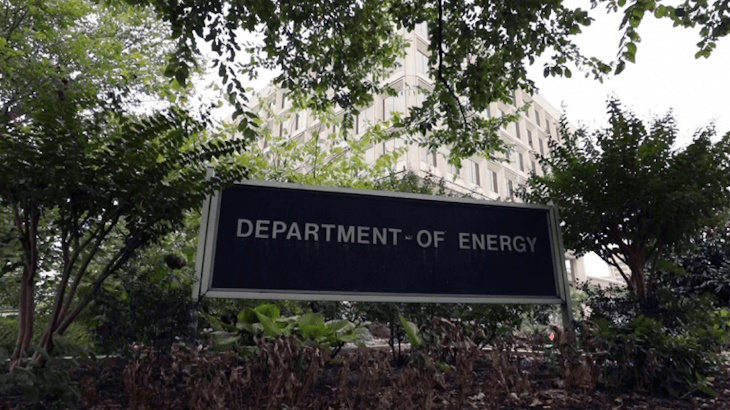 www.world-nuclear-news.org
www.world-nuclear-news.org
The US Department of Energy has opened applications for funding to support the initial domestic deployment of Generation III+ small modular reactor technologies. Up to USD800 million will go to two "first-mover" teams, with USD100 million to address so-called gaps that have hindered plant deployments. The Department of Energy (DOE) estimates the USA will need some 700-900 GWe of additional clean, firm power generation capacity to reach net-zero emissions by 2050, and nuclear power is a proven option that could be deployed to meet this growing demand. As well as looking to operating life extensions, reactor capacity uprates, reversing plans to close reactors, and even restarting formerly closed reactors, utilities are "are earnestly exploring building new reactors to meet the fast-growing demand for carbon-free energy", the agency said. Small modular reactors (SMRs) can be used for multiple applications included power generation, process heat, desalination, and Generation III+ (Gen III+) SMRs "may be able to revitalise and leverage the expertise, workforce, and supply chains supporting the existing fleet of large light-water reactor designs, thus providing a near-term path for new nuclear deployments and operation", it said. According to the solicitation documentation, a Gen III+ SMR is defined as a nuclear fission reactor that uses light water as a coolant and low-enriched uranium fuel, with a single-unit net electrical power output of 50-350 MWe, that maximises factory fabrication approaches, and the same or improved safety, security, and environmental benefits compared with current large nuclear power plant designs. The funding aims to assist the private sector in establishing a "credible and sustainable pathway" to deploying a fleet of Gen III+ SMRs that "advances environmental protection and community benefits, creates new, good-paying, high-quality jobs, and reinforces America’s leadership in the nuclear industry". The funding will be offered in two tiers. Tier 1 - First Mover Team Support - is managed by the DOE Office of Clean Energy Demonstrations and will provide up to USD800 million for milestone-based awards to support up to two first mover teams of utility, reactor vendor, constructor, and end-users/off-takers committed to deploying a first plant while facilitating a multi-reactor, Gen III+ SMR orderbook and working alongside the US National Nuclear Security Administration to incorporate safeguards and security by design into the projects. Teams who wish to apply for Tier 1 funding must include a US utility, reactor technology vendor, and engineering, procurement, and construction (EPC) company. Tier 2 - Fast Follower Deployment Support - is managed by the DOE Office of Nuclear Energy, and will provide up to USD100 million to spur additional Gen III+ SMR deployments by addressing key gaps that have hindered the domestic nuclear industry in areas such as design, licensing, supplier development, and site preparation. "Revitalising America's nuclear sector is key to adding more carbon free energy to the grid and meeting the needs of our growing economy - from AI and data centres to manufacturing and healthcare," Secretary of Energy Jennifer Granholm said. The funding is created by the Consolidated Appropriations Act of 2024 and uses funds from Bipartisan Infrastructure Law. The deadline for applications is 17 January 2025.
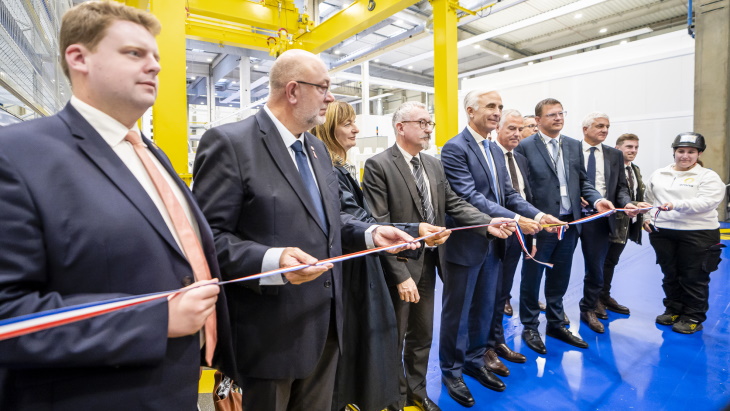 www.world-nuclear-news.org
www.world-nuclear-news.org
Orano has inaugurated a new fully-automated manufacturing plant in the port of Cherbourg, Normandy, for the fabrication of its TN Eagle casks for the transport and dry storage of used nuclear fuel. The opening ceremony was held in the presence of Claude Imauven, chairman of the Orano board of directors and Frédéric de Agostini, senior executive vice president in charge of nuclear packaging and services, together with customers, elected officials and economic stakeholders from the region. Construction of the 6600-square-metre TN Eagle 4.0 factory began in February 2023, with the support of the France Relance investment fund. Equipped with manufacturing processes featuring disruptive technology compared with market standards, the fully-automated factory can assemble weld-free packages in 15 months, compared with an average of more than 40 months for previous-generation products. The TN Eagle factory has a production capacity of up to 30 packages per year. "Implementation of these new processes has been made possible thanks to a design that is innovative in itself," Orano said. "With up to ten times fewer parts than similar packaging, zero welding and exceptional modularity, the TN Eagle design optimises manufacturing while benefiting from greater robustness." The TN Eagle cask design - 5 metres long, 3 metres in diameter, weighing 150 tonnes - was approved by the French Nuclear Safety Authority in 2020 and by the US Nuclear Regulatory Commission in November last year. Orano said it had already received numerous orders for several dozen TN Eagle casks from French and international customers. "I am proud today to inaugurate our TN Eagle factory, the result of the commitment of the Orano teams who, in just six years, have designed new packaging and commissioned a factory featuring breakthrough technology compared with existing standards, while contributing to more reliable, safer and more competitive manufacturing," Agostini said. "I would like to thank our French and international customers for their trust in us." Orano CEO Nicolas Maes added: "This project reflects the group's desire to develop innovative solutions, combining Orano's historical expertise in the field of nuclear packaging and cutting-edge technologies. This new industrial facility, located in the area of Nord-Cotentin, allows us to maximise our support for the needs of our customers all over the world." Orano NPS - a subsidiary of the Orano group - provides global logistics solutions to its customers throughout the world, ranging from the design of packages, together with their approval and manufacture, through to nuclear materials transport operations. Orano NPS carries out more than 6000 transport operations annually worldwide.
 www.nucnet.org
www.nucnet.org
Japan’s Nuclear Regulation Authority on Wednesday (16 October) approved the Takahama-1 nuclear power plant to continue operations for the next 10 years, making it the country’s first reactor to be endorsed to operate beyond 50 years. The regulator confirmed owner and operator Kansai Electric Power Company’s assessment that the plant is safe to operate. It also approved Kansai Electric’s plan for ageing countermeasures at the unit over the next 10 years. The 780-MW Takahama-1 pressurised water reactor unit, in Fukui Prefecture, western Japan is the oldest operational nuclear power reactor in the country. It began commercial operation in November 1974. Kansai Electric applied to the NRA in November last year to operate the plant for a further 10 years after conducting an ageing technical evaluation and formulating a long-term facility management policy. The Takahama station has four units, all of which have been restarted since the 2011 Fukushima-Daiichi disaster. Takahama-1 was restarted in July 2023 after being offline since January 2011. Before Fukushima, Japan’s fleet of 54 nuclear plants generated about 30% of the country’s electricity, but were all shut down for safety checks following the accident. Among the 33 operable nuclear reactors in Japan, 12 have now resumed operations after meeting post-Fukushima safety standards. The restarted plants are: Sendai-1 and -2, Genkai-3 and -4, Ikata-3, Mihama-3, Ohi-3 and -4 and Takahama-1, -2, -3 and -4. Earlier this week, Chugoku Electric Power Company said its Shimane-2 nuclear power plant in Shimane Prefecture, southwest Japan, will restart in early December, a move that will bring the number of reactors online to 13 and boost the nation’s power supply this winter. Under regulations which came into force in July 2013, Japanese reactors had a nominal operating period of 40 years. One extension to this – limited to a maximum of 20 years – could be granted, bringing the maximum to 60 years. In December 2022, the NRA approved a new rule that would allow reactors to be operated for more than 60 years. The rule effectively extended the amount of time reactors can remain operational beyond 60 years by excluding time spent on inspections and other periods they are offline from consideration when calculating their total service life. Japan’s cabinet formally adopted the new rule in February 2023.
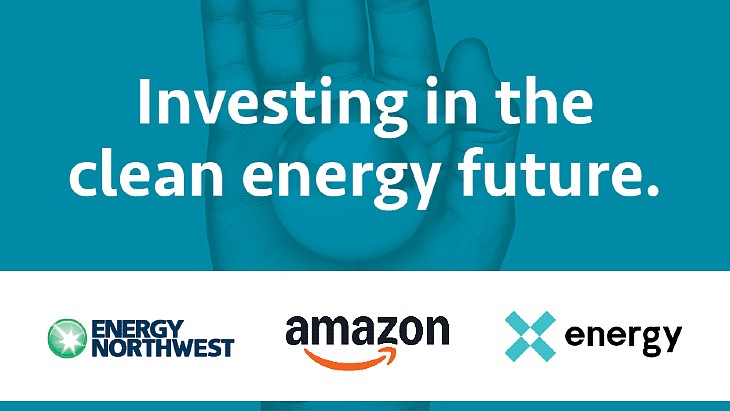 www.world-nuclear-news.org
www.world-nuclear-news.org
Amazon has announced it has taken a stake in advanced nuclear reactor developer X-energy, with the goal of deploying up to 5 GW of its small modular reactors in the USA by 2039. Online shopping and web services giant Amazon's Climate Change Pledge Fund was described as the anchor investor in a USD500 million financing round for X-energy, alongside Ken Griffin, founder and CEO of Citadel, Ares Management Corporation, private equity firm NGP and University of Michigan. The funding is designed to pave the way to completion of the reactor design and licensing, and the first phase of its TRISO-X fuel fabrication facility at Oak Ridge, Tennessee. The first project The first project looks set to be in Washington State, with Amazon announcing it had signed an agreement with Energy Northwest, a consortium of state public utilities, for an initial four advanced small modular reactors (SMRs) generating about 320 MWe, with an option to treble that number, which would be able to power 770,000 homes. Amazon will fund the initial feasibility phase for the SMR project which is planned for a site near the energy company's Columbia Generating Station nuclear energy facility in Richland. Under the agreement Amazon would have the right to purchase electricity from the first phase, while Energy Northwest will have the option to build the eight extra modules, with the additional power being available to Amazon and utilities in the area. Matt Garman, CEO of Amazon Web Services, said: "One of the fastest ways to address climate change is by transitioning our society to carbon-free energy sources, and nuclear energy is both carbon-free and able to scale - which is why it’s an important area of investment for Amazon. Our agreements will encourage the construction of new nuclear technologies that will generate energy for decades to come." Greg Cullen, Vice President for Energy Services & Development at Energy Northwest, said: "We've been working for years to develop this project at the urging of our members, and have found that taking this first, bold step is difficult for utilities, especially those that provide electricity to ratepayers at the cost of production. We applaud Amazon for being willing to use their financial strength, need for power and know-how to lead the way to a reliable, carbon-free power future for the region." The advanced reactors The Xe-100 is a Generation IV advanced reactor design which X-energy says is based on decades of high temperature gas-cooled reactor operation, research, and development. Designed to operate as a standard 320 MWe four-pack power plant or scaled in units of 80 MWe. At 200 MWt of 565°C steam, the Xe-100 is also suitable for other power applications including mining and heavy industry. The Xe-100 uses tri-structural isotropic (TRISO) particle fuel, which has additional safety benefits because it can withstand very high temperatures without melting, X-energy says its design makes it road-shippable with accelerated construction timelines and more predictable and manageable construction costs, and is well suited to meet the requirements of energy-intensive data centres. Clay Sell, X-energy CEO, said: "Amazon and X-energy are poised to define the future of advanced nuclear energy in the commercial marketplace. To fully realise the opportunities available through artificial intelligence, we must bring clean, safe, and reliable electrons onto the grid with proven technologies that can scale and grow with demand. We deeply appreciate our earliest funders and collaborators, notably the US Department of Energy and Dow Inc. With Amazon, Ken Griffin, and our other strategic investors, we are now uniquely suited to deliver on this transformative vision for the future of energy and tech." The initial Xe-100 plant is being developed at Dow Inc's UCC Seadrift Operations site on the Texas Gulf Coast, which would be the first nuclear reactor deployed to serve an industrial site in the USA. What else has been announced? A memorandum of understanding has also been signed with utility company Dominion Energy to look into the development of an SMR project near the company's existing North Anna nuclear power station. It is not the first move into nuclear energy from Amazon, which is co-locating a data centre facility next to Talen Energy's nuclear power plant in Pennsylvania. Robert Blue, Chairman and CEO of Dominion Energy, said: "This agreement builds on our longstanding partnership with Amazon and other leading tech companies to accelerate the development of carbon-free power generation in Virginia. It's an important step forward in serving our customers' growing needs with reliable, affordable and increasingly clean energy. This collaboration gives us a potential path to advance SMRs with minimal rate impacts for our residential customers and substantially reduced development risk." In July, Dominion Energy announced a Request for Proposals from leading SMR nuclear technology companies to evaluate the feasibility of developing an SMR at the company's North Anna plant - while it is not a commitment to build an SMR, it is an important first step in evaluating the technology and the feasibility of developing it at North Anna the company says. Data centres and nuclear Amazon's series of announcements confirms a recent trend of data centre operators looking at nuclear energy as a way to get reliable energy that is carbon free. Amazon noted that it is not just their data centres and web services which are going to see increasing electricity demand, but also wider developments such as electrifying its vehicle fleet. On Tuesday, a fellow online giant, Google, signed a Master Plant Development Agreement with Kairos Power for the development and construction of a series of advanced reactor plants. And last month Microsoft announced it had signed a 20-year power purchase agreement with Constellation which would see Three Mile Island unit 1 restarted, five years after it was shut down.
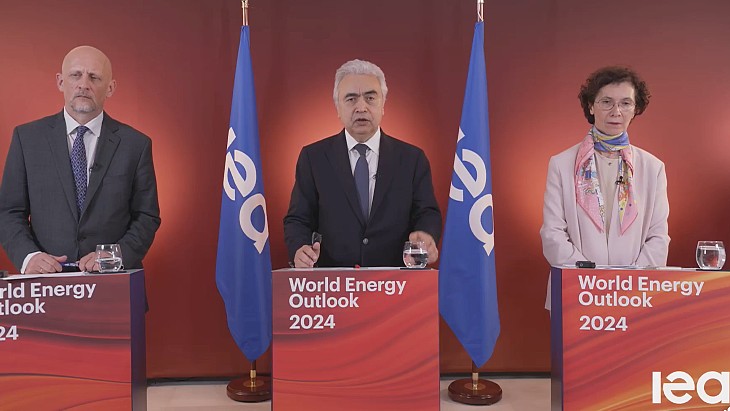 www.world-nuclear-news.org
www.world-nuclear-news.org
Global nuclear generating capacity is expected to increase from 416 GWe in 2023 to 647 GWe in 2050 in a scenario based on existing energy policies, according to the latest World Energy Outlook from the International Energy Agency. "Today's geopolitical tensions and fragmentation are creating major risks both for energy security and for global action on reducing greenhouse gas emissions," according to the IEA. "The world is set to enter a new energy market context in the coming years, marked by continued geopolitical hazards but also by relatively abundant supply of multiple fuels and technologies." IEA Executive Director Fatih Birol said: "In the second half of this decade, the prospect of more ample - or even surplus - supplies of oil and natural gas, depending on how geopolitical tensions evolve, would move us into a very different energy world from the one we have experienced in recent years during the global energy crisis." Based on current policies, the latest report finds that low-emission sources are set to generate more than half of the world's electricity before 2030 – and demand for all three fossil fuels – coal, oil and gas – is still projected to peak by the end of the decade. However, it warns that despite growing momentum behind clean energy transitions, the world is still a long way from a trajectory aligned with its net-zero goals. The World Energy Outlook 2024 considers three scenarios. The Stated Policies Scenario (STEPS) provides an outlook based on the latest policy settings, including energy, climate and related industrial policies. The Announced Pledges Scenario (APS) assumes all national energy and climate targets made by governments are met in full and on time. The Net Zero Emissions by 2050 Scenario (NZE) looks at what must be done to limit global warming to 1.5°C. In the STEPS scenario, clean energy deployment accelerates as the pace of overall energy demand growth slows, leading to a peak in all three fossil fuels before 2030. Increasing reductions in coal demand means it is overtaken by natural gas in the global energy mix by 2030. Clean energy grows more than total energy demand between 2023 and 2035. Led by surging solar photovoltaic (PV) and wind power, clean energy becomes the largest source of energy in the mid-2030s. Although the STEPS scenario sees a threefold increase in renewables that brings fossil fuel use down from 80% of total energy demand in 2023 to 58% in 2050, this falls far short of the step change that occurs in the APS scenario and the NZE scenario, especially the latter. In both these scenarios, renewables begin to rapidly eat into the fossil fuel market share. By 2035, clean energy meets 40% of global energy demand in the APS, and this rises to nearly three-quarters by 2050. In the NZE scenario, clean energy meets 90% of global energy demand in 2050. Around one-third of the remaining fossil fuel demand in the NZE scenario is fully abated, around half is used as a feedstock or in other non-energy use, and the remainder is offset by direct air capture, negative emissions from bioenergy or other forms of carbon removal. Speaking at a press conference to launch the new report, Laura Cozzi, director of sustainability, technology and outlooks at the IEA, said: "We are expecting to see a new record high (in nuclear generating capacity) in 2025 and we expect nuclear to continue to grow as many countries are revising their policies over nuclear, actually extending lifetimes and opening up some new nuclear installations. And this is throughout the world: from China to Europe to the United States and beyond." Nuclear capacity and generation are set to increase in each scenario. Emerging market and developing economies drive this growth, notably China, which accounts for 40% of global nuclear capacity additions in the STEPS scenario by 2035 and almost 50% in the NZE scenario. The IEA noted that these projected additions mean that China is on track to have the largest nuclear power capacity in the world by around 2030 in each scenario. Nuclear generating capacity increases from 416 GWe in 2023 to 647 GWe in 2050 in the STEPS scenario. In this scenario, global nuclear generation increases from 2765 TWh in 2023 to 4460 TWh in 2050, while its share of total electricity production decreases from 9% to 8% over the same period. In the APS scenario, nuclear generating capacity increases to 874 GWe in 2050, while in the NZE scenario it reaches 1017 GWe in 2050. "Policy support for nuclear power has risen in recent years," the IEA noted. "In December 2023, more than 20 countries pledged to triple global nuclear capacity by 2050. Notable developments in several European countries include extending operations for existing reactors in Belgium, lifting a ban on developing new nuclear plants in Switzerland, the identification of new builds as a priority in Sweden and Poland, and confirmation of the importance of nuclear in France. Many countries are showing interest in small modular reactors and the first projects outside China and Russia are expected to come online around 2030." Sama Bilbao y León, director general of World Nuclear Association, said: "The report makes clear nuclear energy will remain an important part of a clean and reliable electricity mix, with more than a doubling of nuclear capacity in the Announced Pledges scenario, and a capacity above 1000 GWe in the Net Zero 2050 scenario. "Our analyses are even more ambitious, predicting nuclear capacity needing to grow to more than 1200 GWe to reach net-zero in a cost-effective and equitable manner. This goal to triple global nuclear capacity by 2050 was announced by 25 countries at COP28 last year, endorsed by the nuclear industry through the Net Zero Nuclear initiative, and supported by 14 major global banks and financial institutions less than a month ago."
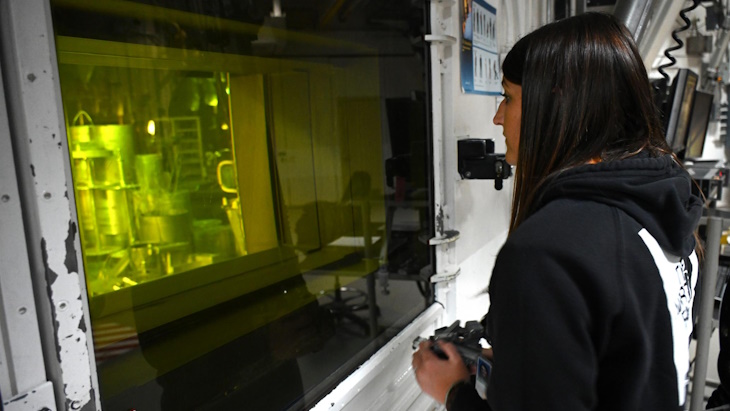 www.world-nuclear-news.org
www.world-nuclear-news.org
The US Department of Energy has approved the Conceptual Safety Design Report for Oklo Inc's Aurora Fuel Fabrication Facility at Idaho National Laboratory. The facility will fabricate fuel for the Aurora "powerhouse" liquid metal-cooled fast reactor plant which is to be located at the same site. The fuel will be fabricated using high assay low enriched uranium (HALEU) recovered from used fuel from the Department of Energy (DOE) Experimental Breeder Reactor-II (EBR-II), which operated at Idaho National Laboratory from 1964 to 1994. Oklo has been granted access to 5 tonnes of HALEU as part of a cooperative agreement with the laboratory that was competitively awarded in 2019. The DOE will retain ownership of the HALEU both during and after its use. California-based Oklo has a site use permit from the DOE to build and operate a prototype of its Aurora reactor at Idaho National Laboratory (INL). In September, it finalised a Memorandum of Agreement with the US DOE Idaho Operations Office granting access to conduct site investigations at its preferred location, and anticipates deploying the first commercial Aurora powerhouse in 2027. The company has also received previous DOE support to advance the Aurora powerhouse design through the Office of Nuclear Energy's Gateway for Accelerated Innovation in Nuclear programme and additional funding to demonstrate recycling technologies through the Advanced Research Projects Agency-Energy (ARPA-E) initiative. "We are proud of our collaboration with INL and DOE as we move closer to turning on our first commercial plant that uses this recovered nuclear fuel in just a few years," said Oklo co-founder and CEO Jacob DeWitte said. Jess Gehin, INL’s associate laboratory director for Nuclear Science and Technology, said the approval of the Conceptual Safety Design Report is a critical step toward fabricating fuel for the first commercial deployment of Oklo's plant: "As the nation’s nuclear energy research laboratory, we are committed to partnering with companies like Oklo to advance fission technologies and deliver clean energy solutions," she added. The Aurora powerhouse is a fast neutron reactor that uses heat pipes to transport heat from the reactor core to a supercritical carbon dioxide power conversion system to generate electricity. It uses metallic fuel to produce about 15 MWe as well as producing usable heat, and can operate on fuel made from fresh HALEU or used nuclear fuel. Earlier this year, Oklo successfully completed the first end-to-end demonstration of the key stages of its advanced fuel recycling process, in collaboration with Argonne National Laboratory and Idaho National Laboratory.
 www.nucnet.org
www.nucnet.org
Nuclear is one of seven clean energy technologies that are key to affordable and secure transitions, but overcoming barriers to deployment, including network infrastructure, should be a priority worldwide. Together the seven technologies – nuclear, solar PV, wind, electric vehicles, heat pumps, hydrogen and carbon capture – could account for three-quarters of tCO2 emissions reductions to 2050, complemented by other renewables such as bioenergy and geothermal, and energy efficiency. According to the International Energy Agency’s latest World Energy Outlook, published on 16 October, the share of nuclear power is likely to remain close to 10% under three main long-term scenarios. The IEA, a Paris-based intergovernmental energy watchdog, said the report comes against a backdrop of escalating risks in the Middle East, Russia’s war in Ukraine and heightened geopolitical tensions globally. It explores a range of energy security issues that decision makers face as they proceed with clean energy transitions. “Regional conflicts and geopolitical strains are highlighting significant fragilities in today’s global energy system, making clear the need for stronger policies and greater investments to accelerate and expand the transition to cleaner and more secure technologies,” the report says. Some of the immediate effects of the global energy crisis had started to recede in 2023, the report says, but the risk of further disruptions is now “very high”. Fatih Birol, the IEA’s executive director, said the report confirms its prediction that the world’s fossil fuel consumption will peak before 2030 and fall into permanent decline as climate policies take effect. But continuing investment in fossil fuel projects will spell falling market prices for oil and gas, the IEA added. Surge In Clean Energy Demand To Continue The IEA has predicted that the surge in demand for clean electricity sources will accelerate further in the years ahead, adding the equivalent of Japan’s power demand to the world’s total electricity use each year in a scenario based on today’s policy settings. The report’s projections based on today’s policy settings indicate that the world is set to enter a new energy market context in the coming years, marked by continued geopolitical hazards but also by relatively abundant supply of multiple fuels and technologies. In last year’s World Energy Outlook the IEA said a changing policy landscape was creating opportunities for a nuclear comeback with global reactor capacity potentially reaching well over 900 GW by 2050, more than double the 417 GW in 2022. In July the IEA said global nuclear generation is on track to reach a new high in 2025, surpassing its previous record in 2021. According to the agency, nuclear generation is forecast to rise globally by 1.6% in 2024, and by 3.5% in 2025.
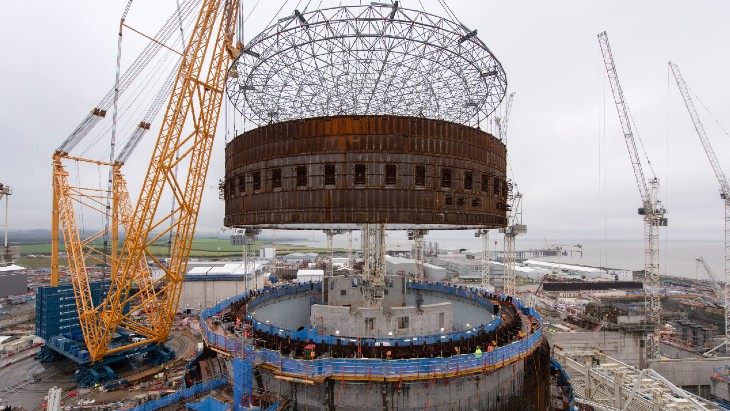 www.world-nuclear-news.org
www.world-nuclear-news.org
The third and top steel ring for Hinkley Point C unit 2's containment building has been lifted into place. Click the original link for the photos.
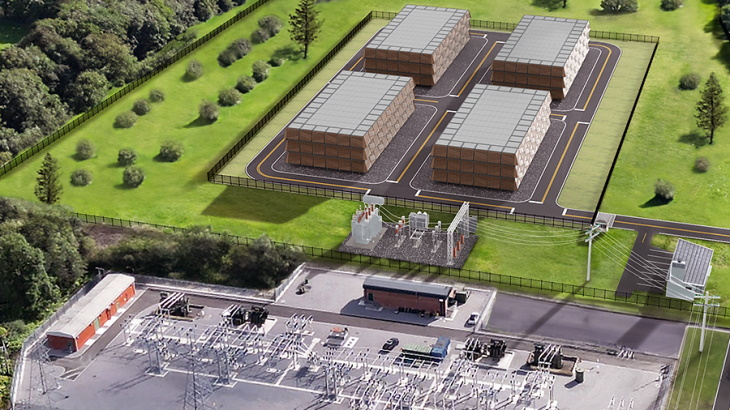 www.world-nuclear-news.org
www.world-nuclear-news.org
US microreactor developer Last Energy has announced plans for four microreactor power plants at the site of the decommissioned Llynfi coal-fired power station in Bridgend County, south Wales. Last Energy is a spin-off of the Energy Impact Center, a research institute devoted to accelerating the clean energy transition through innovation. Its reactor technology is based on a pressurised water reactor with a capacity of 20 MWe or 80 MWt. Power plant modules would be built off-site and assembled in modules. A Last Energy plant, referred to as the PWR-20, is comprised of a few dozen modules that, it says, "snap together like a Lego kit". The PWR-20 is designed to be fabricated, transported, and assembled within 24 months, and is sized to serve private industrial customers. Under its development model, Last Energy owns and operates its plug-and-play power plant on the customer's site, bypassing the decade-long development timelines of electric transmission grid upgrade requirements. The company said it is advancing plans to develop four PWR-20 plants on the vacant site of the Llynfi coal-fired power station. It said the new plants will "provide energy security to local manufacturers, create jobs, and unleash a long-term economic investment in the region". The Llynfi power station - a 120 MW coal plant - operated between 1951 and 1977. Following decommissioning in 1977, the 14-acre site has remained vacant. "We chose Llynfi because of its proximity to a large existing industrial base, which is in need of secure 24/7 clean power," Last Energy said. "Llynfi Clean Energy Project will support growth, revitalisation, and decarbonisation of local industry." Last Energy said it has been actively engaging with the UK's Office for Nuclear Regulation, Natural Resources Wales, Planning and Environment Decisions Wales, the Environmental Agency, and with local and national Welsh and UK officials, and will continue to do so throughout the project. The company is targeting 2027 to commission the first plant, "following a successful planning and licensing process". Last Energy estimates the project represents a capital investment of GBP300 million (USD393 million), which will not require public funding. Contracts with local suppliers would amount to over GBP30 million, while more than 100 full-time local jobs would also be created. "Last Energy's Llynfi project will not only transform a vacant coal site into a hub for clean energy production, it will also create economic opportunity for companies throughout south Wales," Last Energy UK CEO Michael Jenner was quoted as saying by Nation-Cymru. "The benefits of nuclear power speak for themselves, so our focus must be on delivering those benefits on time and on budget. "Last Energy's emphasis on mass-manufacturability allows us to deliver significantly smaller plants in under 24 months with purely private financing. We look forward to engaging with the public, meeting local suppliers, and being an active partner in south Wales' path towards energy security and industrial decarbonisation." In August, the company announced that it had reached commercial agreements for 80 units. Last Energy announced agreements for 34 units in 2023 and began 2024 with agreements for 50 units. Of the agreements, 39 of the 80 units are slated to be built to serve data centre developers. The company says its goal is to build 10,000 units in the next 15 years.
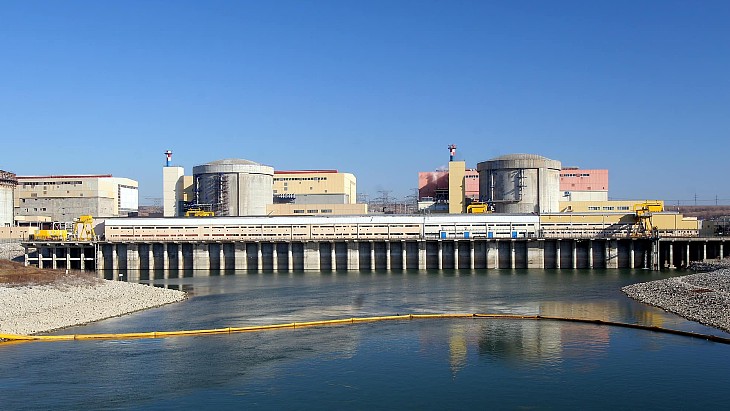 www.world-nuclear-news.org
www.world-nuclear-news.org
Romania's nuclear power plant operator Nuclearelectrica and France's Framatome are aiming to launch a full-scale commercial irradiation service for medical isotopes in 2028. Following the conclusion of a feasibility study, the two companies are now implementing the project, covering detailed engineering procurement, installation and the commissioning of the irradiation system at unit 2 of the Cernavoda nuclear power plant in Romania. Lutetium-177 (Lu-177) is a beta-emitting radioisotope used in targeted radionuclide therapy for the treatment of prostate and other cancers, destroying the cancer cells while leaving healthy cells unaffected. Framatome Healthcare, through its Isogen joint venture with Canada's Kinectrics, is involved in a pioneering international collaboration with Bruce Power and ITM Isotope Technologies Munich SE, to produce Lu-177 from a commercial nuclear power reactor, at Bruce Power's unit 7, which, like Cernavoda, is a Candu pressurised heavy water reactor. The feasibility study concluded that Framatome's technology could be adapted to Cernavoda unit 2 which would be "able to irradiate ytterbium-176 at the market technical standard required to produce lutetium-based radiopharmaceuticals". François Gauché, VP Framatome Healthcare, said: "We are proud to have reached this milestone with Nuclearelectrica and to take this important project on to the next phase. Bringing additional capacities from nuclear power reactors helps build a large-scale, reliable and diversified supply of critical radioisotopes to fight cancer. The demand for massively accessible cutting-edge cancer treatments globally is growing rapidly. The nuclear industry stands ready to play its part in strengthening the supply chain for lifesaving radioisotopes in Europe and across the world." Cosmin Ghita, CEO of Nuclearelectrica, said: "Nuclearelectrica is committed to advancing not only energy production but also public health. The production of lutetium-177 marks a significant milestone for Romania and the global nuclear industry. Our role in supporting cutting-edge oncological treatments through nuclear medicine solidifies the role of nuclear energy in enhancing human well-being. This project highlights the multifaceted contributions that nuclear power can make - clean energy generation and life-saving medical isotopes." Cernavoda 2 is a 650 MWe Candu 6 pressurised heavy water reactor - by the Danube River, 160 kilometres east of the capital Bucharest - which began commercial operation in 2007.
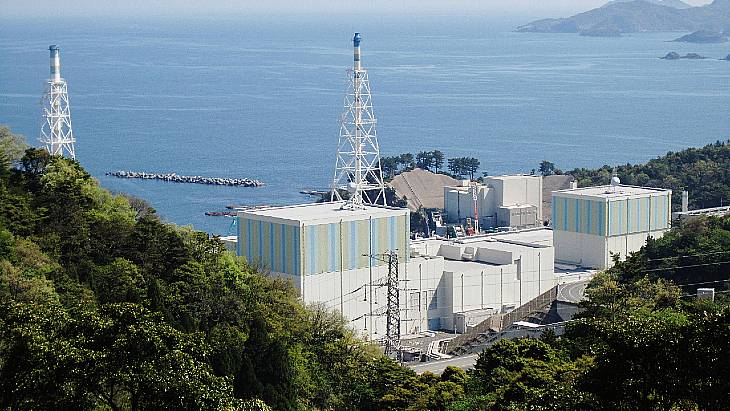 www.world-nuclear-news.org
www.world-nuclear-news.org
Chugoku Electric Power Company plans to restart unit 2 of its Shimane nuclear power plant - which has been offline since January 2012 - in December. It will become the first boiling water reactor (BWR) in Japan to be restarted. Revised regulations were announced by Japan's Nuclear Regulation Authority (NRA) in July 2013, which must be met before reactors can receive permission to restart. These set out requirements for plants to be able to respond to a variety of natural phenomena as well as establish new measures to mitigate the effects of severe accidents, such as reactor core damage caused by beyond design basis events. Chugoku applied to the NRA in December 2013 for inspections to verify whether measures taken at Shimane unit 2 - which has been offline since 27 January 2012 - meet the new safety standards. Chugoku has constructed a 15-metre-high sea wall to protect the plant from tsunamis and made preparations for a potential eruption of the Mount Sanbe volcano. It originally aimed to complete seismic reinforcement and other works for Shimane 2 by the end of February 2023. In June 2021, the NRA approved a draft report finding that Shimane 2 meets the revised regulatory standards. The assessment of the unit was officially adopted in September 2021 after a public comment period and other procedures, clearing the way for it to resume operation, pending local consent. Shimane 2 became the 17th Japanese reactor to pass the regulator's safety screenings and the fifth BWR - the same type as those at the Fukushima Daiichi plant - to receive regulatory approval to restart. Following approvals by the cities of Matsue, Izumo, Yasugi and Unnan, in June 2022 the governor of Shimane prefecture approved the restart of Shimane 2. His approval marked the completion of the process to gain the consent of local communities for the 789 MWe BWR to resume operation. Shimane 2 had been scheduled to restart in August, but Chugoku pushed back the restart due to required safety upgrade work. The utility has now released a revised schedule for the restart of the unit. It plans to begin loading fuel into the reactor's core on 28 October, with the unit expected to restart in early December. Power generation is scheduled to begin in late December, with the reactor resuming commercial operation in January 2025. "We will continue to take all possible measures to ensure the operator's pre-operational inspections proceed steadily with safety as our first priority as well as to respond appropriately to the pre-operational confirmation conducted by the NRA, and we will prepare each and every step toward the restart," Chugoku said. So far, eleven reactors have resumed operation in Japan, all of which have been pressurised water reactors. Shimane unit 1 - a 460 MWe BWR that started commercial operation in March 1974 - is currently being decommissioned. In August 2018, Chugoku initiated the regulatory process for starting up Shimane 3, a new 1373 MWe advanced boiling water reactor nearing completion.
 www.nucnet.org
www.nucnet.org
The European Industrial Alliance on Small Modular Reactors (SMRs) has identified nine SMR projects it will support as its first batch of project working groups (PWGs). The alliance said the effort marks a significant first step toward Europe’s goal of deploying SMR technologies across the bloc by the early 2030s. The alliance, a collaborative public-private platform launched by the European Commission in February 2024, said on 11 October it picked its first batch of PWGs from a pool of 22 applications submitted as part of a June 2024 call for projects. The nine projects identified at this stage are: EU-SMR-LFR project (Ansaldo Nucleare, SCK-CEN, ENEA, Raten); CityHeat project (Calogena, Steady Energy); Project Quantum (Last Energy); European LFR AS Project (Newcleo); Nuward (EDF); European BWRX-300 SMR (OSGE); Rolls-Royce SMR (Rolls-Royce SMR Ltd); NuScale Voygr SMR (RoPower Nuclear S.A); and Thorizon One project (Thorizon). The selections do not mean the projects gets direct funding from the alliance. However, there will be the opportunity for collaboration among stakeholders including SMR developers, regulators and supply chain companies. Projects that were not selected in this round will have the opportunity to reapply in the second quarter of 2025 after refining their proposals, the alliance said. Projects in the first batch include a range of reactor designs, from lead-cooled fast reactors and pressurised water reactors to molten salt reactors and micro-modular plants. They include plants for power generation, district heating, and industrial applications such as oil refining, desalination, and steel production. In May the alliance held its inaugural meeting in Brussels with the commission saying a new generation of nuclear plants is expected to help the bloc respond to the upcoming high demand for clean electricity and high quantities of hydrogen. The commission said key tasks for the alliance include identifying the most promising and cost-effective SMR technologies eligible for alliance support, strengthening the European supply chain, identifying investment barriers and analysing funding opportunities.
 www.nucnet.org
www.nucnet.org
The Canadian Nuclear Safety Commission (CNSC) has approved Ontario Power Generation’s (OPG) request to continue operating Pickering units 5 to 8 to the end of 2026, ensuring the units can continue in operation until they are taken offline for refurbishment. In its decision, released on 11 October, the CNSC approved OPG’s request for a licence amendment to operate Units 5 to 8 to 31 December 2026, up to a maximum of 305,000 equivalent full power hours. OPG is planning to refurbish units 5, 6, 7 and 8 at Pickering, marking a major turnaround for the facility, which was scheduled to close by 2025. Pickering currently has six Candu 500 515-MW pressurised heavy water reactor units in commercial operation – Units 1, 4, 5, 6, 7, and 8. Units 2 and 3 were permanently shut down in 2007 and 2008. Units 1 and 4, which began commercial operation in 1973, are set for a permanent retirement at the end of 2024. OPG said it is continuing to advance planning for the refurbishment, which will be complete by the mid-2030s and could see the units operate for another 30 years or more. OPG had intended to begin the refurbishment project this year with engineering and design work and securing long-lead components. OPG’s timeline envisages putting the entire station layup in 2026 so that refurbishment can begin. According to Ontario energy minister Todd Smith, the project will begin with CAD2bn ($1.4bn, €1.3bn) of funding for scoping engineering design work that is expected to begin “over the next year or so.” He suggested that the scoping and engineering work is expected to inform OPG’s future steps, including a firm schedule and accurate cost estimates.
 www.nucnet.org
www.nucnet.org
Google will back the construction of seven small modular nuclear reactors (SMRs) from Kairos Power, becoming the first tech company to commission new nuclear power plants to provide low-carbon electricity for its energy-hungry data centres. Google and Kairos said on Monday (14 October) that under the terms of the deal, the first of its kind, Google committed to buying power generated by seven reactors to be built by Kairos Power, a seven-year-old California-based startup. The agreement targets adding 500 MW of nuclear power starting at the end of the decade, the companies said. The first reactor could be online by 2030 and additional reactors by 2035. Google said that buying power from multiple SMRs sends an “important demand signal to the market”, while making a long-term investment to accelerate commercialisation. “We believe that nuclear energy has a critical role to play in supporting our clean growth and helping to deliver on the progress of AI,” said Michael Terrell, senior director for energy and climate at Google. “The grid needs these kinds of clean, reliable sources of energy that can support the build out of these technologies... We feel like nuclear can play an important role in helping to meet our demand, and helping meet our demand cleanly, in a way that’s more around the clock. “The end goal here is 24/7, carbon-free energy,” said Terrell. “We feel like in order to meet goals around round-the-clock clean energy, you’re going to need to have technologies that complement wind and solar and lithium-ion storage.” The company did not disclose the financial terms of the deal. The 500 MW of generation that would be built by Kairos for Google is about enough to power a midsize city – or one AI data centre campus. The project site – or whether there could be reactors at multiple locations –has not been determined, the companies said. Google would have data centres somewhere in the region near the Kairos reactors, but it has not been determined whether they would receive power directly from the nuclear plants or from the grid. Google could count the addition of nuclear power toward meeting its carbon-reduction commitments. The units for Google will include a single 50-MW reactor, with three subsequent power plants that would each have two 75-MW reactors, Kairos said. That compares with about 1,000 MW at reactors at conventional nuclear power plants. Background: Work Has Begun On Demonstration Unit Kairos will have to navigate complex approvals through the US Nuclear Regulatory Commission (NRC), but already has clearance to build a demonstration reactor in Tennessee, which could start operating in 2027. The Hermes Low-Power Demonstration Reactor, which could be operational in 2027, is the first and only Generation IV* reactor to be approved for construction by the NRC and the first non-light-water reactor to be permitted in the US in over 50 years. Hermes is a non-power version of Kairos Power’s fluoride salt-cooled high temperature reactor, the KP-HFR. Kairos has also begun construction on a new reactor-grade salt production facility at its manufacturing development campus in Albuquerque, New Mexico. Mike Laufer, chief executive and co-founder at Kairos, said the demonstration project and the Albuquerque plant are helping the company avoid spiraling costs, a pitfall of the conventional nuclear industry. Tech companies are increasingly interested in nuclear as a medium-term solution to providing low-carbon electricity to meet their data centres’ energy demands. Last month, Microsoft announced that it would commit to buying 20 years’ supply of electricity from the mothballed US nuclear power plant Three Mile Island if Constellation Energy restarted the site. In March, Amazon Web Services, a subsidiary of the online retail giant founded by Jeff Bezos, acquired US power producer Talen Energy’s Cumulus data centre campus at the Susquehanna nuclear power station in Pennsylvania. US computer technology company Oracle wants to power a new data centre through nuclear energy, according to the firm’s chief technology officer Larry Ellison. Speaking during a recent earnings call, Ellison confirmed the cloud computing giant has “already got building permits” for three SMRs, without giving details. Kairos Power: The Reactor Technology Kairos Power’s technology uses a molten-salt cooling system, combined with a ceramic, pebble-type fuel, to efficiently transport heat to a steam turbine to generate power. This passively safe system allows the reactor to operate at low pressure, enabling a simpler more affordable nuclear reactor design. Instead of water, which is used in traditional reactors, Kairos uses molten fluoride salt as a coolant. The molten salts transfer heat away from the reactor core. The heat can then be used either to produce electricity or for industrial processes such as oil refining, desalination, and steel production. These reactors have several inherent safety advantages. The first, and possibly the most important, is that the reactor is operated at low pressure because the coolants never approach boiling point. Even in an accident, there would be no force expelling materials from the reactor, and no high-pressure containment system would be required to prevent such a release. The plant will use Triso coated particle fuel. Triso – or “tristructural-isotropic” – fuel particles contain a spherical kernel of enriched uranium oxycarbide surrounded by layers of carbon and silicon carbide, which contains fission products. According to the US Department of Energy, Triso is essentially a “robust, microencapsulated fuel form” developed originally in the 1950s. Perhaps Triso’s biggest benefit is that each particle acts “as its own containment system thanks to its triple-coated layers,” the DOE said. This allows them to retain fission products under all reactor conditions. * No precise definition of a Generation IV reactor exists, but the term is used to refer to nuclear reactor technologies under development including gas-cooled fast reactors, lead-cooled fast reactors, molten salt reactors, sodium-cooled fast reactors, supercritical-water-cooled reactors and very high-temperature reactors. An international task force, the Generation IV International Forum (GIF), is sharing R&D to develop six Generation IV nuclear reactor technologies. GIF said goals of Generation IV reactor design include lower cost and financial risk, minimising nuclear waste and high levels of safety and reliability.
 Emil
6d ago
•
100%
Emil
6d ago
•
100%
Correct. In this case it's just shipping the component parts. I guess @KnitWit@lemmy.world was talking about PWR reactors that power these ships, much like the NS Sevmorput.
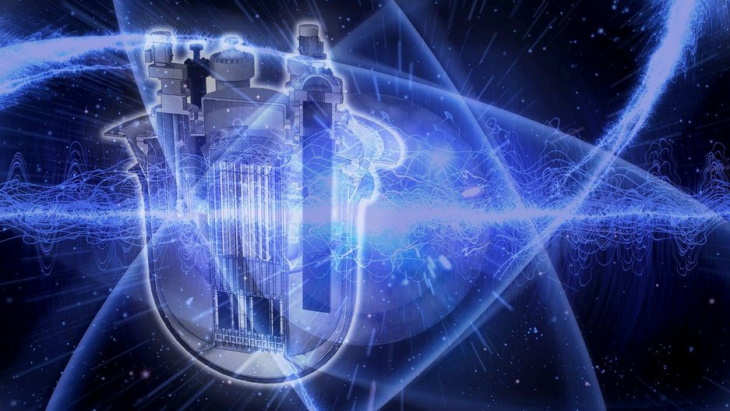 www.world-nuclear-news.org
www.world-nuclear-news.org
The European Commission has selected nine small modular reactor projects - including two lead-cooled fast reactors - in the initial round of applications to form Project Working Groups under the European Industrial Alliance on SMRs. The European Commission (EC) launched an Industrial Alliance dedicated to SMRs in February this year, aiming to facilitate the development of SMRs in Europe by the early 2030s. The Alliance works through working groups to improve the conditions for the development and deployment of SMRs, including rebuilding the supply chain for nuclear power. The activities aim to support specific SMR projects and accelerate their deployment on the European market. The EC said the initial membership call elicited responses from more than 300 stakeholders, encompassing SMR technology designers, utilities, energy-intensive users, supply chain companies, research institutes, financial institutions, and civil society organisations. The alliance members and its governing board were formally confirmed at the inaugural General Assembly in Brussels on 29-30 May. In pursuit of tangible project outcomes, in June the Alliance launched a call for SMR projects wishing to be considered for the Alliance's Project Working Groups (PWGs). Subsequently, the governing board, with the assistance of the Alliance secretariat, conducted a review and assessment of the 22 applications received. Following the second meeting of the governing board - held on 7 October - the first batch of SMR projects that would constitute the PWGs under the Alliance have been selected. They include: EU-SMR-LFR project (Ansaldo Nucleare, SCK-CEN, ENEA, RATEN); CityHeat project (Calogena, Steady Energy); Project Quantum (Last Energy); European LFR AS Project (Newcleo); Nuward (EDF); European BWRX-300 SMR (OSGE); Rolls-Royce SMR (Rolls-Royce SMR Ltd); NuScale VOYGR SMR (RoPower Nuclear SA); and Thorizon One project (Thorizon). "Each of these projects will have the opportunity to constitute a PWG involving all partners interested in collaboration with the project," the EC said. Lead-cooled fast reactors Commenting on the selection of the EU-SMR-LFR project, Marc Schyns, director of innovative nuclear systems at the Belgian Nuclear Research Centre (SCK-CEN), said: "Our project is getting a label – a vote of confidence from Europe. This will give a huge boost to the partners working on this; it only further strengthens our ambition to demonstrate the potential of lead-cooled, fast reactor technology." Project partner Ansaldo Nucleare added: "The development path, which has been awarded by the European Commission, includes the construction of two demonstration prototypes (LEANDREA and FALCON) designed to validate the technological choices, which will be built in Belgium and Romania, respectively." Newcleo CEO Stefano Buono said the selection of the company's LFR AS project was a "ringing endorsement" for its technology. "We look forward to collaborating with the new European Commission Commissioner and other industry stakeholders, who, like us, are members of the European Industrial Alliance of SMRs, to foster a supportive environment for the growth of new nuclear technologies," he added. Ansaldo Nucleare noted, "The four future partners Ansaldo Nucleare, ENEA, RATEN and SCK-CEN have signed a collaboration agreement, together with Newcleo. This will launch discussions to see how we can work together and where the two consortiums can collaborate on LFR technology. By joining forces, we are enhancing our shared commitment to innovation and sustainability within the nuclear sector and can further promote the development of fast reactor technology in Europe." The EC said most of the other projects that applied in the first assessment round and were not selected in the first batch of SMR projects will have the opportunity to submit a new application in the next round, which is expected to be organised in the second quarter of 2025.
 Emil
7d ago
•
100%
Emil
7d ago
•
100%
I think they might be referring to cargo like ammonia. What if we have a Beirut incident with a ship with a nuclear reactor? Something to plan ahead for sure.
 Emil
1w ago
•
100%
Emil
1w ago
•
100%
Yucca mountain is a political problem, not a technical one. But sure, if you want examples of good practice, I refer to COVRA in the Netherlands, where I had a tour a few months ago. Very interesting facility. If you want a deep geological repository, there is Onkalo in Finland. I'm not a fan of dedicated DGRs, but since it's around, we might as well use it I guess.
In my view, should you care, we're not going to put away the spent fuel at all in these DGRs, but recycle them in until we used all of the fuel. At this point there actual waste, should we no longer be able to recycle this, is around 1% of the current 'waste' in volume and consists solely of short lived isotopes remaining radioactive for around 300 years. If you want to bury that, sure, I guess.
But please, now you tell us more about how fantastic the waste management is of the arsenic mining tailings in China, which are a result of digging for rare Earths to make solar panels. I look forward to it!
 Emil
1w ago
•
100%
Emil
1w ago
•
100%
That's a nice analogy! Don't mind me if I use it in the future 👍
 Emil
1w ago
•
100%
Emil
1w ago
•
100%
Before we can advance the use of solar panel use, the question of waste must be answered. Humans and corporations aren’t known for their responsibility.
See the double standard? No? I guess not.
Of any industry, the civilian nuclear industry has been exemplary in dealing with their waste streams, in contrast to all other energy industries. A waste stream that's actually highly recyclable and becomes no longer dangerous (unless you eat it) after just 300 years.
Nuclear waste is not an actually existing problem, and anyone raising it is employing a delaying tactic for our society moving away from fossil fuels actually killing our planet.
 Emil
2w ago
•
100%
Emil
2w ago
•
100%
Nog update hierover? Outages gebeuren niet vaak, maar we waren ruim een uur (wat ik gemerkt heb) offline. Een mastodon account met status updates zou fijn zijn 🙂
 Emil
1mo ago
•
50%
Emil
1mo ago
•
50%
Yes, vastly better. You just learned about SL-1 or something?
 Emil
2mo ago
•
100%
Emil
2mo ago
•
100%
Public ownership would be a great idea, but it would still incur costs in the immediate sense. Things have to be updated and maintained.
 Emil
2mo ago
•
60%
Emil
2mo ago
•
60%
"The blasting had been planned for 5.30pm but was delayed after a 36-year-old pro-nuclear protester scaled an electricity pylon near the towers in protest at their demolition."
Andreas Fichtner is now facing a legal battle for this protest. If you want to help out, please consider a donation.
 Emil
2mo ago
•
100%
Emil
2mo ago
•
100%
Forbidden licorice.
 Emil
3mo ago
•
100%
Emil
3mo ago
•
100%
Great overview, but I have two notes:
- A mention is made of the proliferation risks due to purified plutonium. But no mention is made of the difference between weaponsgrade Pu-239 and useless Pu-240. Pu-240 has the annoying characteristic that it can 'spontaneously' fission, which of course for is highly undesirable in warheads. These are mixed up and hard to separate. This simple fact makes proliferation risks at best a theoretical scenario.
- Vitrification of the fission products is explained well, but is still accompanied with the obligatory "hundreds of thousands of years" comment. This is incorrect. After 300 years, these fission products are no longer radiotoxic.
 Emil
3mo ago
•
100%
Emil
3mo ago
•
100%
Several countries, and I guess Italy is among them, have decommissioning regulation where the old unit first has to 'cool off' for a few decades before the building can be torn down.
So, to answer of whether it is this or that, I answer: yes.
 Emil
3mo ago
•
50%
Emil
3mo ago
•
50%
Did not expect this to go to any other company but a Russian one tbh.
 Emil
4mo ago
•
100%
Emil
4mo ago
•
100%
Really impressive that their design can be transported as a 200 MWe module. That truly brings the SMR promise closer!
 Emil
4mo ago
•
100%
Emil
4mo ago
•
100%
Well, he knows about this community now! 🙂
 Emil
4mo ago
•
72%
Emil
4mo ago
•
72%
"Like, you have no idea what we’re talking about, but you’re very opinionated about it."
Thought that was an apt summary of your posts on Kyle.
 Emil
4mo ago
•
100%
Emil
4mo ago
•
100%
Great question. This might actually play a role here. Nuclear energy has the lowest land impact of any energy source. They better involve the local population in this though.
 Emil
4mo ago
•
100%
Emil
4mo ago
•
100%
Adding pictures seems to work wonky: I now have to add them several times as they appear to remove themselves when writing out the post.
 Emil
4mo ago
•
100%
Emil
4mo ago
•
100%
Yay, thanks!
 Emil
5mo ago
•
54%
Emil
5mo ago
•
54%
What a crime against the climate and environment ☹️